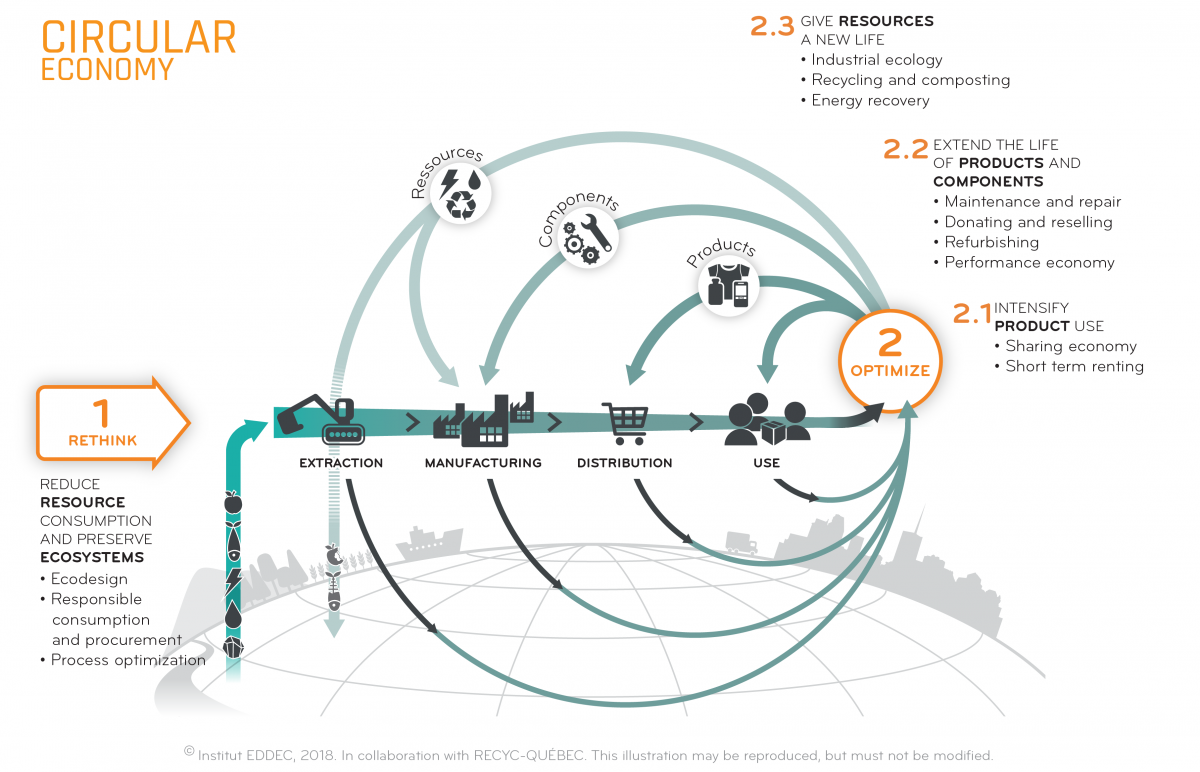Circular Economy: a Winning Business Strategy
SADC and CAE Experts advice
If you were told that there was a magic formula to turn your waste products into money, would you want to know about it?
Here it is: The Circular Economy.
Leaving the magic aside, the circular economy is real. It’s a business strategy you can incorporate into your small business right now.
It’s a different way of doing business, one in which waste products are seen as a resource.
The circular economy improves the environment and the economy through two main mechanisms:
-
Rethinking our production/consumption patterns to consume fewer resources and protect the ecosystems that generate them.
-
Optimising the use of resources that already circulate in our societies.

The Potential Benefits of a the Circular Economy for your Small Business
This new business strategy has peaked your interest and you are ready to make the effort to integrate it into your business?
Several avenues can be explored to make this shift. Rethinking your products, for example, by offering a new range of used or reconditioned products can have several positive effects for your company, including cost reduction, improved profitability and reduced environmental impact.
The opportunities and economic impacts of the circular economy on your small business are numerous.
An initial case study on the circular economy in Quebec was conducted to identify economic sectors with a high circular potential and to measure the benefits.This study concluded that in addition to reducing environmental impact, the circular economy has the potential for increasing employment, boosting GDP (gross domestic product) and fostering the development of new markets.
Small Businesses that Have Made the Transition
Many small businesses and organizations across Quebec have integrated the circular economy in their business strategy or made it their primary mission.
Here are a few examples that illustrate how a small business, regardless of the industry in which it operates, can participate in this collective effort.
Crème boulangerie et pâtisserie, Saint-Hyacinthe
The three young bakers behind Crème Boulangerie Pâtisserie had the anti-waste idea of reusing spent grain, a highly nutritious grain residue from beer brewing, which is incorporated into baked goods. The spent grain is harvested at Brasseurs du Monde, which is next door to the bakery and generates no pollution.
The company also aims to reduce local food waste through partnerships with local farmers by recovering seemingly out-of-spec fruit, vegetables and herbs for use in making muffins, pies, jams, etc.
Ou Quoi – Salon Urbain, Gatineau
This Gatineau restaurant and bar has integrated the circular economy within the restaurant sector. The owners of the business want to minimize waste production and limit waste.
Due to the actions taken in 2017, the business diverted 77% of its residual materials from landfill, banning number 6 plastic (not recyclable in the Outaouais) and plastic straws.
To limit waste, they rotate their product offer, for example, one selection of kombucha per week, and they limit the variety of products offered.
Where to Start?
These examples of businesses that have embraced a circular economy demonstrate the opportunities and economic impacts of this business strategy.
Would you like to follow in their footsteps, turn your company’s waste into money and participate in changing the way our society produces and consumes?
The advisors from your local SADC or CAE are there to support you and guide you to the right local resources to make your project a success.

Ready, set, go!
Your local SADC and CAE advisors are here to help you go further.